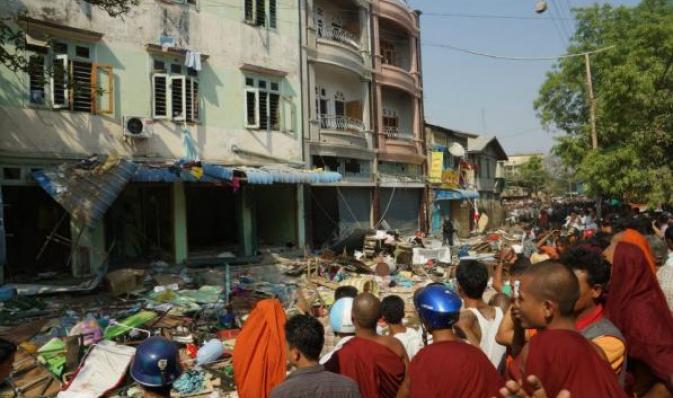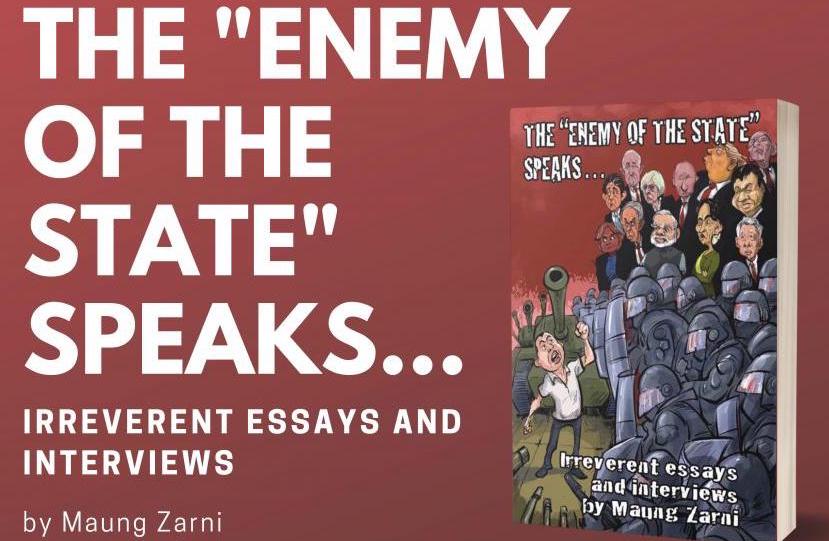
Who would have thought that decency would be a bad thing in a journalist, intellectually and professionally speaking? But when it comes to Burma, that certainly seems to be the case.
There is no such thing as unbiased reporting or scholarship. That much is settled among those who know the inevitably biased nature of interpreting the world, whether it be through scholarship or journalism.
So I don’t fault journalists for their biases and editorial and publishing slants.
However, when it comes to reporting Burma, the coverage has been beyond biased. It is generally horribly inadequate, or downright incorrect.
From a Burmese perspective—especially from the perspective of those who have borne the brunt of the half-century of military rule under various and evolving disguises—the way Burma is being reported is like adding insult to injury.
Take, for instance, the media’s standard framing of the violence against the Rohingya and now the other Muslims of Burma as “communal” or “sectarian.”
Otherwise decent and intelligent international publications continue to get it all wrong. The Economist, for instance, recently published an article about “Communal violence in Myanmar” that came with this subheading: “Sectarian violence was not supposed to be part of Myanmar’s bright new direction.”
Empirically speaking—not that one should hold any mass media coverage to the standards of empirical research—there is absolutely nothing sectarian or communal about the violence that has been unleashed in waves and phases by the organized Buddhist mobs and executed with “brutal efficiency,” as the UN special envoy for Burma, Vijay Nambiar, put it. The violence against the now terrorized and permanently displaced populations of Rohingyas and other Muslims in 15 towns across the country is one-way, organized, and state-backed.
Overwhelmingly, it has been one single community that has borne the death and devastation wrought by all this violence: the Muslims, including the Rohingyas and Muslims who are ethnically Burmese.
So why has the media kept getting even a rather straightforward story—that organized Buddhist monks were killing Muslims in broad daylight before the presence of armed security personnel—wrong?
Why has it failed to connect the two simple dots between local security troops’ inaction and Naypyidaw’s central command?
Burma’s security troops were reportedly ordered to “do nothing,” as evidenced in a local investigative report published in the New York Times. The same observation was made by UN Special Rapporteur Tomas Quintana in an AFP report that was released on the same day.
Further, the state-organized and controlled fire department also put out fires only in Buddhist homes, while it let Muslim houses, shops and mosques burn to ashes, as local eyewitnesses told the EU-funded NGO, the Euro-Burma Office, while the pogrom in Meikhtila was still unfolding from March 20-22.
Whatever their editorial stances or slants, one major problem that keeps the journalists from reporting intelligently, professionally and realistically about Burma is that journalists are decent human beings who think, feel and view things from a human perspective, informed by their own human decency. Burma, on the other hand, is ruled by sociopaths and psychopaths who will stop at nothing to defend their power, wealth and delusions.
This means that journalists end up trashing reality-grounded views as “extremist” and “incredible” and dismiss any analysis that suggests a central role of the state—from President Thein Sein’s office down to local security units—in the waves of violence against Muslims.
Unable to read Burmese social media sites and other online forums, the journalists miss out on open-source Burmese-language materials such as the Facebook page of the President’s Office or Myawaddi News, the Defense Ministry’s main propaganda organ, where neo-Nazi messages and posts, official and unofficial, are disseminated.
Instead, international journalists go with their own pet narratives and paradigms. Consequently, they get their Burma stories horribly wrong, identifying trees but unable to see the forest that the trees make up. Thus the state-orchestrated anti-Muslim terror campaign degenerates into “communal violence,” and the man with no integrity becomes “a pursuer of peace” and a sincere reformer.
In short, the international mass media has proven itself incapable of connecting the dots in its coverage of Burma. The reading and viewing public of the rest of the world is thus ill-served by the humanity of foreign journalists who fail to see what is abundantly clear to most Burmese observers.
When reporting about Burma, it helps to be able to see the world through the eyes of sociopaths and psychopaths. From the ruling generals to certain elements of Burmese society, Burma has both in abundance. Without taking their mindset into account, one is bound to end up with half-baked analyses that don’t do justice to our attempts to understand the twisted world of Burmese politics.
Maung Zarni is a Burmese activist blogger (www.maungzarni.com) and visiting fellow of Civil Society and Human Security Research at the London School of Economics.
This article firstly published here.









